In 2001, I was assigned to Carrier Air Wing 14 (CVW-14), at Naval Air Station (NAS) Lemoore, California. I wore two “hats” for CVW-14. First, I was the Force Protection (FP) and Anti Terrorism (AT) Officer. The seven squadrons of CVW-14 were geographically dispersed at Naval Air Stations Lemoore, Point Mugu, and North Island, all in California, at Whidbey Island in Washington, and Norfolk in Virginia. I was responsible for FP/AT for all of them. Second, I was the Seahawk Weapons and Tactics Instructor (SWTI) on staff, so I trained the helicopter squadron assigned to CVW-14, the Helicopter Anti-Submarine Squadron Four (HS-4) Black Knights, at NAS North Island in Coronado, California.
On the morning of September 11, 2001, I was in my apartment in San Diego, burning off some “use or lose” leave. My only problem for the week was deciding which beach to hit each day of my “staycation.” At 0700, I was awakened by a call from my “little boss,” the Operations Officer for CVW-14 who simply said “Wake up. The big boss wants a call at 0800 with a status update.” Click.
My “big boss,” the Commander, CVW-14, wanted a phone call from me at 0800 with a status update… On what? I was used to being interrupted on leave. It happens, But why? I called back to Lemoore—no answer. I called the helicopter squadron at North Island—no answer. I turned on the TV, saw the news, and thought—well, that’s what he wants.
I eventually got through to all seven squadrons in the air wing, confirmed they were set at Force Protection Condition (FPCON) Alpha (as if they needed me to tell them that) and called back to Lemoore at 0800.
I told the big boss that his air wing was at FPCON Alpha and he asked if I had any other inputs. I replied, “Sir, it could have been a lot worse. So far, there’s no indication they used Weapons of Mass Destruction (WMD).” To be clear, the attacks of 9/11 were horrific. Equally clear—they could have been far worse.
Shortly after 9/11, Bush administration officials began sensitizing the American public to the reality that having endured the conventional attacks of 9/11, America needed to prepare for and prevent what the enemy was clearly trying to do next, obtain WMD to conduct a bigger, deadlier attack, either in the U.S. or overseas.
Almost exactly a year later, on Sunday, September 8, 2002, then National Security Adviser Condoleezza Rice, while making the case for the U.S. to invade Iraq and end Saddam Hussein’s dictatorship, one way or another, said “we don’t want the smoking gun to be a mushroom cloud.” By that point, I was no longer in San Diego. I was in Japan, getting ready to prevent that mushroom cloud from happening, by taking down a ship that was (or so we thought) transporting WMD.
Forward Deployed Naval Forces Are Always Ready
In June of 2002, I reported to Helicopter Anti-Submarine Squadron 14 (HS-14), the Chargers, part of Carrier Air Wing Five (CVW-5), stationed at Naval Air Facility (NAF) Atsugi, Japan. Together, HS-14 and CVW-5 were assigned to the aircraft carrier USS Kitty Hawk (CV-63) stationed just down the road in Yokosuka.
At that time, CVW-5 was comprised of three squadrons of F/A-18 Hornets and one squadron each of F-14 Tomcats, S-3 Vikings, E-2 Hawkeyes, EA-6B Prowlers, and SH-60 Seahawks. In other words, we were the only helicopter squadron in the air wing, which meant at times we wound up getting pulled in many different directions. It’s better to have too much to do than not enough, but as the only helicopter squadron, we were never plagued with inadequate tasking. We always had more customers and tasking than operational bandwidth.

For most of its history, the Navy’s carrier fleet has followed a cycle of deployment, followed by a post-deployment stand down and maintenance period, followed by a training and exercise cycle in preparation for deployment, followed by another deployment. During the post-deployment and stand down maintenance period, the carrier and carrier air wing are in a greatly reduced readiness status. The carrier and its aircraft are in heavy maintenance, personnel are in classroom training, and a relatively limited amount of training flights are being executed. For a carrier/air wing team in this status, it would take at least 45 days to prepare to deploy—put aircraft back together, finish or cancel ground training, get all the pilots requalified on carrier landings, and so on.
In contrast, Forward Deployed Naval Forces (FDNF) are manned, trained, and equipped to be always ready for deployment. Our tether was measured in hours, not days. At any given time the ship and air wing had to have a certain percentage of personnel on station, ready to deploy, as well as a certain number of aircraft in a Full Mission Capable (FMC) status. Using the nomenclature of the time, we were constantly at T-1 levels of training and readiness, at M-1 levels of materiel support, and at C-1 levels of combat capability overall. To be clear, the FDNF carrier and air wing stationed in Japan do execute deployments, they are just of shorter duration and greater frequency than the standard six- to eight-month deployments of the rest of the carrier fleet, which is stationed in the Continental United States.
Helicopter Anti-Submarine Squadron 14’s Structure And Mission
In 2002, HS-14 was equipped with five SH-60F and three HH-60H Seahawk helicopters. Like all carrier-based HS squadrons at the time, we had a very challenging and diverse set of missions. As the name indicates, the primary mission of the squadron was Anti-Submarine Warfare (ASW).
With a powerful and accurate dipping sonar, the SH-60F Seahawk airframes were optimized for ASW in the aircraft carrier inner defense zone. From a hover, the sonar could be lowered on a cable into the water, then start actively pinging. If a submarine was within detection range, the sonar waves would bounce off the hull and be picked up and displayed by our onboard processor. In contrast, the HH-60H was optimized for Naval Special Warfare (NSW) support. It had a Forward Looking Infrared (FLIR) turret on the nose, a standard suite of Aircraft Survivability Equipment (ASE) such as Radar Warning Receiver (RWR), Infra-Red Guided Missile Counter Measure (IRCM) devices, chaff and flare dispensers, and a wire strike protection system.

Additionally, the HH-60H could carry a rail on the port side of the aircraft holding up to four AGM-114 Hellfire missiles, as well as crew-served machine guns. With all the seats stripped out in the back, it had just enough room to carry up to ten or eleven total personnel, between aircrew and SEALS.
For an optimal/fully supported NSW mission, we would have two of the HH-60Hs equipped with M-60/M-240 7.62 mm machine guns, one out the port window, and one on the starboard side in the cabin door, with two to three aircrewmen and eight SEALS onboard. The third HH-60H would serve in a command role and as a weapons truck, loaded with Hellfire missiles, a .50 cal machine gun in the cabin door on the starboard side, a SEAL sniper or two, and the senior ranking officer for the SEAL detachment to provide command and control.
Depending on the size/threat/nature of the NSW mission, we could roll in some support from the SH-60B Seahawks flown by Helicopter Antisubmarine Light Fifty One (HSL-51), the Warlords, also stationed at NAF Atsugi. Like the HH-60H, the SH-60B had a FLIR and Hellfire capability; it also had a surface search radar and robust data link. Both these capabilities were very useful in the maritime NSW environment, especially in the extremely congested waters of the Pacific Rim.
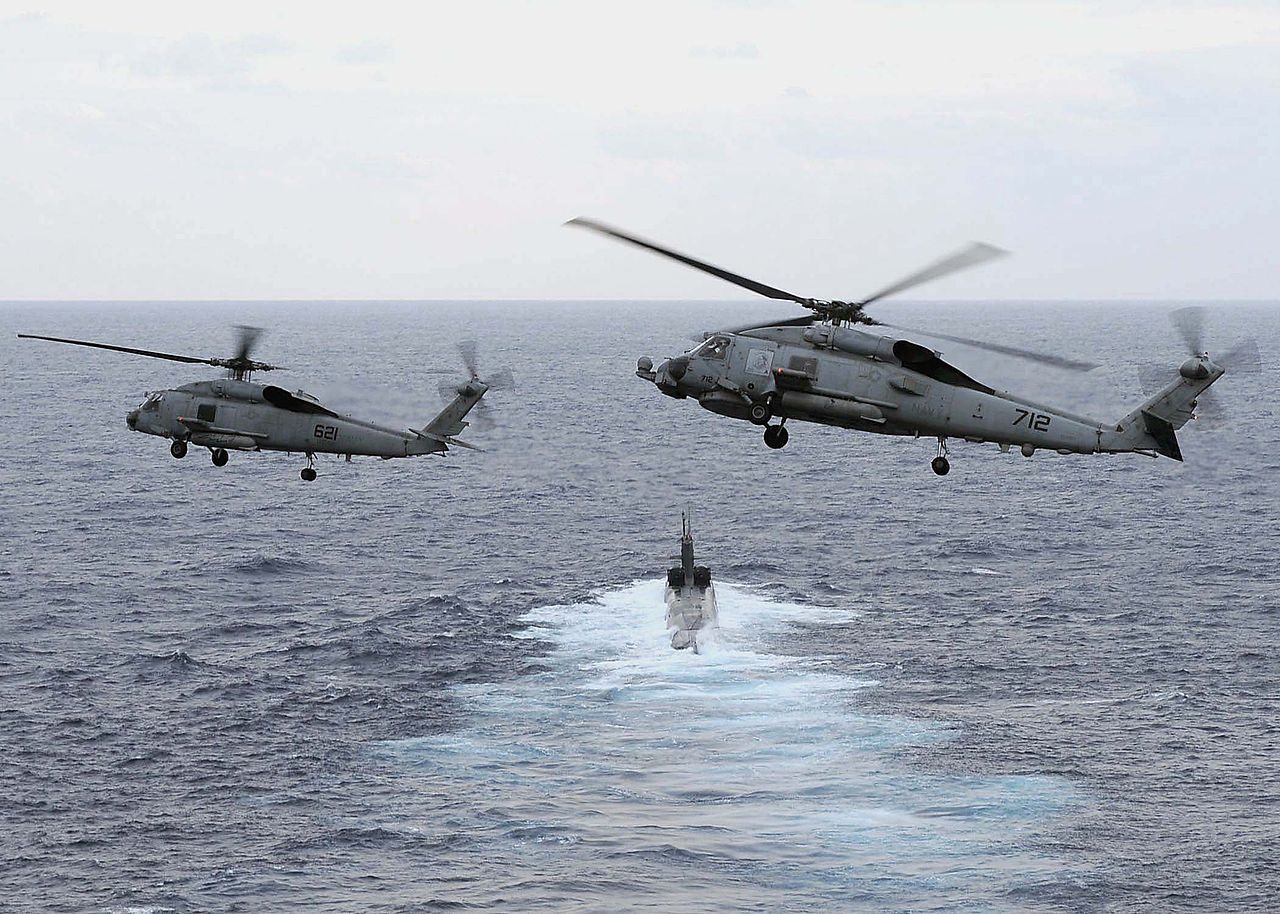
At the time, HS squadrons flew SH-60F/HH-60H Seahawks primarily off of the aircraft carriers, and HSL squadrons flew SH-60B Seahawks primarily off of surface combatants, such as frigates, destroyers, and cruisers. Although, depending on the mission, we would “cross deck” to each other’s ships as required. In any case, for a maritime NSW mission, depending on what the target and operation looked like, we would have a mix of HH-60Hs and tricked-out SH-60Fs carrying SEALS, an HH-60H serving as a fire support and/or command platform, and an SH-60B providing situational awareness and comms via radar and data link.
Who Wants Some Scud Missiles?
Many veterans of the wars in Afghanistan and Iraq refer to these conflicts as “never-ending wars,” and with good reason. But long before the U.S. ever contemplated getting involved in armed conflict in either of those countries, we entered into a different land war on the other side of Asia, on the Korean peninsula. While the Korean Armistice Agreement of 1953 put a stop to active combat as part of the Korean War, it did not formally end the war. As a result, U.S. forces on the Korean peninsula constantly train to various “renewal of hostilities” scenarios. The FDNF carrier/air wing team, although stationed in Japan, are integral to these contingency plans. Needless to say, a lot of our attention was focused on the Korean peninsula, and whatever shenanigans the North Koreans were up to.
Since 1953, North Korea has engaged in plenty of malfeasance on or near the Korean peninsula, including initiating multiple armed skirmishes on the Demilitarized Zone (DMZ), infiltrating North Korean soldiers wearing South Korean military uniforms into South Korea, printing extremely accurate counterfeit U.S. currency and distributing it in South Korea, kidnapping Japanese citizens, and the list goes on.
Beyond their destabilizing activity on the Korean peninsula itself, North Korea has been a designated state sponsor of terror for over two decades. One of the reasons it has been listed as a state sponsor of terror is that it provides support to other designated state sponsors of terror, including Iran and Syria.
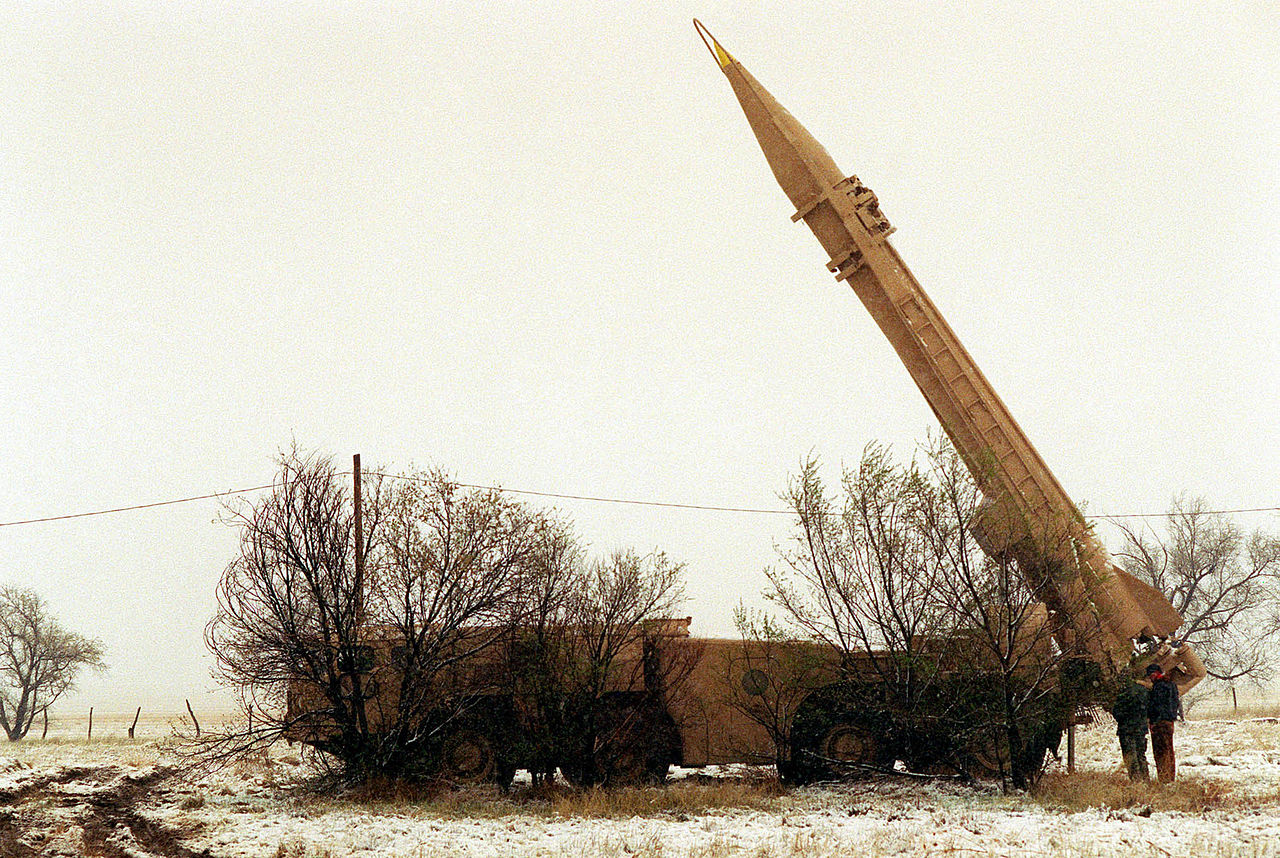
North Korea is the primary technical enabler of the Iranian ballistic missile and nuclear weapons programs. We knew all this at the time, of course. There has never been any doubt as to the nature of the North Korean regime. What changed after 9/11 was that North Korea had been identified by President Bush as part of the “axis of evil” along with Iran and Iraq. We knew that the North Koreans had been exporting ballistic missiles to the Middle East and we were about to experience what the U.S. and its allies were prepared to do to stop it first hand.
Short Notice Maritime Interdiction Operation
Even though it was 17 years ago, out of an abundance of caution, I am going to leave out some of the details of the mission. Suffice to say in the fall of 2002, we received message traffic that Commander, Seventh Fleet (C7F) was putting together a task force and we were to supply three helicopters and adequate pilots, aircrew, and maintainers to that task force to conduct a Maritime Interdiction Operation (MIO) that would last at least 30 days.
C7F is the numbered Navy fleet that exercises command and control over all Navy assets in the Western Pacific and the Indian Ocean. C7F has a massive footprint—think of it as operating from just west of Hawaii all the way through the Western Pacific, and across the Indian Ocean to the Pakistani coastline, where Commander, Fifth Fleet (C5F) takes over.
We were ordered to report to Okinawa. Readers will be familiar with many of the larger U.S. military installations on Okinawa, including Kadena Air Base and Marine Corps Air Station Futenma. Less well known is the U.S. Navy facility at White Beach. It is little more than a massive pier extending 2,500 feet out into Nakagusuku Bay and some shore support facilities, but that is all we needed to rally up.
Three surface ships, embarking a total of five helicopters, three HH-60Hs and two SH-60Bs, and a platoon of SEALS (approximately 16 personnel), as well as a couple of EOD techs gathered at the pier. We were under strict orders not to discuss the mission and were told we would not get any further intelligence on it until we got underway.

We had never worked with this particular SEAL platoon before, so we took the opportunity to talk things over with them, go over the aircraft, walk through our Helicopter Visit Board Search and Seizure (HVBSS) and fast-rope terminology. We weren’t talking about our particular mission per se—none of us knew for sure what it was—but we thought it would be a good idea to make sure we were all on the same page generally before we got underway.
We were feet dry in Okinawa for no more than 48 hours. This was just enough time to gather everyone together, get supplies loaded, figure out how we were going to split the helicopters, pilots, aircrew, and SEALs among the three surface ships, and get a superficial inbrief with the task force commander. This consisted primarily of a “who’s who in the zoo” data dump on what ships, aircraft, and personnel were in the task force.
Why We Got The Mission Instead of 160th SOAR
In a previous article, I discussed why Navy SEALs fly most of their “feet dry” missions on Army and Air Force helicopters, but this operation is a great example of the opposite situation.
As we were loading up in Okinawa, we heard rumors that the 160th Special Operations Aviation Regiment (SOAR) detachment in South Korea was making a bid to take the lead for flight support. While the 160th does great work, we never thought we would lose this mission to them. This was a purely maritime NSW mission and there are too many things that land-based helicopters just can’t do well on ships. Army helicopters have operated successfully from big deck Navy ships like aircraft carriers, amphibious assault ships, and supply ships, but operating from small-deck surface combatants is another issue entirely.
The first video below shows the entire concept of the Recovery Assist Secure Traverse (RAST) process that helicopters use on small surface combatant and the second video shows an SH-60B using the system:


In order to conduct RAST landings, helicopters have to have all of the associated equipment built into the airframe—it’s not something you can add on in a few hours or days before the mission. The reality is that small ships pitch, roll, and yaw much more than the big ships the 160th SOAR was used to operating off of. As such, there was no possibility that they were going to be able to take this mission.
Sure enough, within 36 hours of getting the initial prepare to deploy order, we also received confirmation that this would be an all-Navy mission. Navy ships, Navy SEALS, Navy Explosive Ordnance Disposal (EOD), and Navy helicopters. Sometimes it seems our modern approach to warfighting takes the joint approach too far and it felt good to have an all Navy mission.
Underway And Mission Brief
An hour or two after we got underway, the pilots, aircrew, SEALS, and EOD techs got the full inbrief on the mission. Sure enough, as suspected, it was a North Korean ship we would be going after, the So San. At the inbriefing, we received some of the intel that identified the So San in port in North Korea being loaded with Scud missiles. While there was no definitive evidence of WMD being loaded, the potential was obviously there. WMD are a lot smaller than Scud missiles. We knew the Scud missiles were there, we had to assume that WMD might also be present, too.
The mission was clear—we were going to conduct a multi-helicopter assault against the So San, preferably at night, with four helicopters—two HH-60Hs loaded with eight SEALS and EOD techs each, another HH-60H functioning as a weapons truck with missiles, machine guns, and SEAL snipers, and an SH-60B for comms relay and radar cueing. This was a mission we had practiced endlessly and we had executed a number of unopposed actual HVBSS operations in the past.
Here is a good video of a practice HVBSS conducted out of an MH-60S, which is very similar to an HH-60H. An unopposed HVBSS in permissive conditions would look very similar to this:

We were excited to know the target, get the mission, and start preparing. But as we looked a little closer at the photos we had of the So San, it quickly became apparent this would be a very difficult ship to take down via HVBSS, due to the number of cables and wires strung around the ship.
In order to execute the HVBSS, a helicopter has to hover over a clear space on the deck of the ship, a fast-rope has to be tossed out of the helicopter to the deck, then the SEALS and EOD personnel have to rapidly descend the rope. The So San had very little clear deck space. It’s cargo loading cranes and stanchions were all stayed with multiple cables and wires. That would make the insertion via fast-rope extremely difficult, and slow.

We discussed shooting out the wires with the Navy SEAL snipers and the Officer in Charge (OIC) of the platoon. Ultimately, we decided the advantage gained by shooting out the wires was less than the risk incurred by firing the first shot. If this was going to devolve from a surprise HVBSS in the middle of the night into a firefight, we wanted the North Korean sailors to take the first shot.
Remember, we had three HH-60H helicopters, two of which had two M-60/M-240 machine guns, one of which had a .50 cal machine gun and four Hellfires, plus a SEAL sniper at our disposal. If it went hot, we were confident we had enough firepower to quickly suppress any resistance. The best outcome here was to take down the ship without any shots fired and without any of the North Korean sailors getting killed. Depending on what the cargo turned out to be, their value as intelligence assets might be significant, and of course, if we killed them on the way in, they couldn’t tell us anything.

It’s Just Scud Missiles, Who Cares?
The military efficacy of the Scud missile is relatively limited. It is a short-range ballistic missile with extremely poor accuracy. As a first strike or counter strike weapon aimed at military targets, it is of virtually no value. With that said, it is a very effective weapon for use in terror attacks against civilian populations. During the Gulf War, Saddam Hussein’s forces launched approximately 42 Scud missiles at Israel. This action, more than anything else, threatened to shatter the fragile U.S.-led coalition.
In any case, the U.S. was very interested in this shipment of Scud missiles—where was it going? Who was the intended recipient? What was their purpose in acquiring the missiles?
As an added complicating factor, at the time North Korea was reportedly expanding its WMD program. It was possible that along with the Scud missiles, North Korea was proliferating Nuclear, Biological, or Chemical (NBC) weapons, their components, or their associated technologies. While we were not at war with North Korea, we certainly were at a state of heightened tension and any hint of WMD ratcheted up the intensity even more.
Training, Tracking, And Training Some More
It was just under 1,000 nautical miles from Okinawa to the port where the So San was located. Again, out of an abundance of caution, I am not going to tell you which port the So San was getting underway from. Suffice to say North Korea has a number of ports on the east coast of the Korean peninsula, with direct access to the Sea of Japan, and on the west coast of the Korean peninsula, with direct access to the Yellow Sea. Both of these seas are extremely crowded with commercial shipping and fishing vessels. Our plan was to lay off the coast far enough that North Korean intelligence would not detect us, wait to get “cued” onto the So San, then follow it via primarily visual tracking, using the five helicopters in our task force plus other land and sea-based aircraft.

Of course, all three ships and both SH-60B helicopters had powerful radars that could have tracked the So San fairly easily, but U.S. military radars have a very specific emissions signature. Had we used active radar to track the So San, it might have keyed them in as to our presence.
Once we were on station off the Korean Peninsula, we began training for the mission. We had all done dozens of practice HVBSS operations and some of us had quite a few unopposed HVBSS missions under our belt, but this would be a pretty big operation—up to five helicopters airborne at once, with the potential that it could turn into a firefight at any time.
Most Navy surface combatant vessels have a helicopter hangar with room for two birds, but only one can launch at a time. From the time one helicopter launches, it can take up to 30 minutes to get the second helicopter out of the hangar, unfold its rotor head, and get it spun up and launched. Launching five aircraft from three separate vessels was going to take some timing and coordination, so we began practicing the mission, day and night.
It seemed like forever, but it was only a couple of days that we had to wait for the So San to get underway. Once it was, we began a game of cat and mouse. We had to stay close enough to the So San to keep visual contact via helicopters and FLIR, but not so close that it would see us. We had other national reconnaissance assets external to the task force to help cue us in, as well.
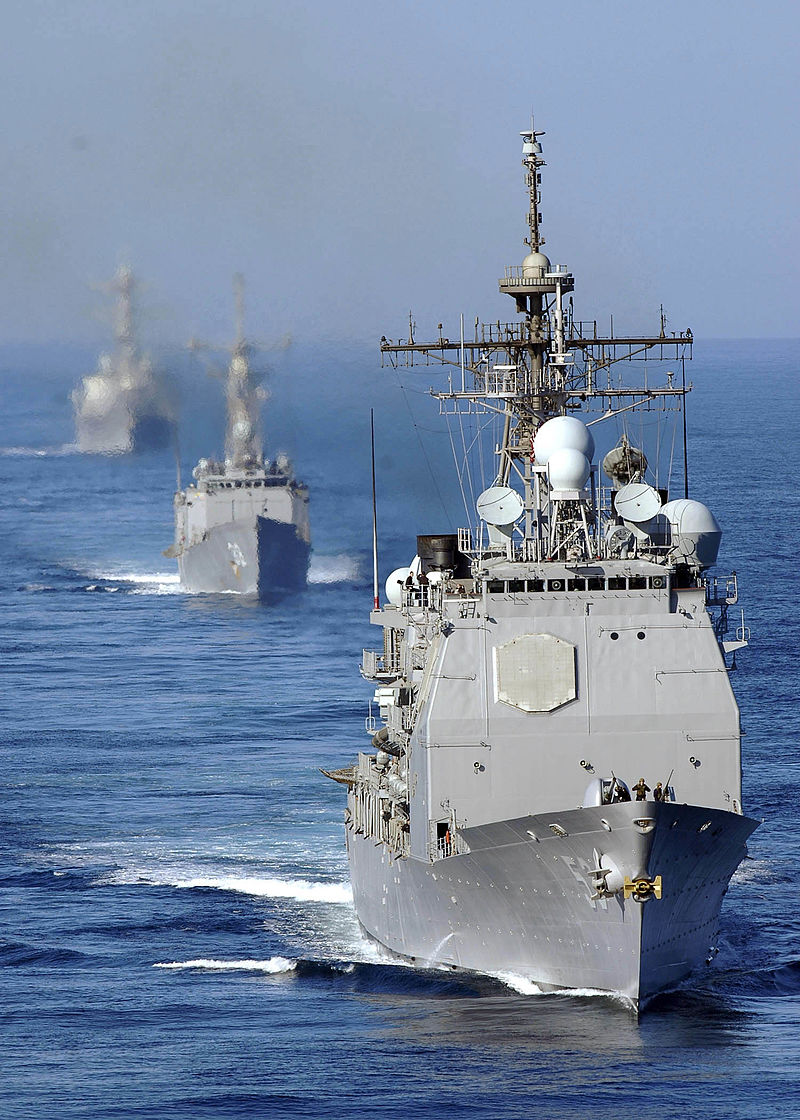
Exactly how we tracked the So San beyond using our Mark 1 Mod 0 eyeballs, I will leave up to the reader’s imagination. Suffice to say, from shortly after it got underway until the So San was boarded, 6,500 miles away from North Korea, the U.S. Navy knew exactly where the ship was.
Is Tonight The Night?
We were told the execute order on this mission was going to be made at the national level, so our local commanders would not have any more of a heads-up then we would. We knew the execute order could come down at any minute, but we also knew that our window to execute the order was night time and most probably late at night or early in the morning.
We quickly developed a rhythm. If we did not get the execute order by about 0500, we knew we were off for the next twelve hours and went to sleep. We’d get up around 1200, check the message traffic, see what was on the boards, and plan our training flight for the day/evening.
We did the first two or three training flights during the day, to maximize safety and familiarity with each other. Once we had our battle rhythm down, we started doing most of our training flights at night. So, depending on sunset, we would generally plan a late afternoon/early evening launch, wait for total darkness, do a practice HVBSS, land, stow the aircraft, and wait in the wardroom on the ship, wondering if tonight was the night we would get the go order.

We were generally done with our training flight by around 2130 and in the wardroom by 2200 each night. The wardroom is basically a small dining room for officers, which doubles as a planning space between meals. We sat around the table, drinking Diet Coke, waiting for the go order until 0500, then we’d hit the rack.
The go order never came.
What The Movies Leave Out: Nice Work, Now Go Home
In the movies, there is always a mission, and always a go order. In real life, a whole heck of a lot of military operations consist of preparing to do something, then not doing it.
That’s what happened in this case.
It’s 6,500 miles from Korea to where the So San was eventually taken into custody. Our task force of three ships, five helicopters, about 20 pilots and aircrew, a SEAL platoon, and a few EOD techs tracked the So San for a lot of that distance, but not all of it.

The further away we got from our home base of Japan without getting the go order, the more skeptical we would ever get it. The mission started to look a lot more like a babysitting operation than a takedown. We started to speculate that now that national reconnaissance assets were dialed in on the So San, the probability was we would be called off.
The logic was clear—if the So San was headed to the Middle East, the smart play was to let it get as close to the intended destination as possible, gather intelligence, see what they were up to and where they were going, before taking the ship.
Sure enough, after several weeks on mission, we got the call. We were canceled. The task force was heading back to Japan.
Don’t Worry, This War Ain’t Ending Anytime Soon
I remember the exact moment the mission was canceled. It was almost sunset and we had a no-fly day scheduled to allow the maintainers to catch up on working off gripes on the birds. I was standing on the fantail with a few of the other pilots when the ship slowed down, turned 180 degrees and picked up speed. We all knew even before reading the message traffic that our task force had been ordered back to Japan.
Nobody had much to say, except one of my aircrewman, who looked at me and said “Don’t worry, sir. This war ain’t ending anytime soon.” I laughed and let the bitterness slip away.
The mission wasn’t a failure—someone else would take down the So San. It just wouldn’t be us.

Spanish Navy Gets The Prize
On Monday, Dec. 9, 2002, the Spanish Navy frigate Navarra (F85), accompanied by its oiler and support vessel Patino, hailed the So San on bridge-to-bridge radio frequency. Navarra challenged it to stop and prepare to be boarded and inspected. At the time of the challenge, the So San was located several hundred miles southeast of Yemen, roughly where the Arabian Sea and the Gulf of Aden meet.
The So San ignored the verbal challenge and continued on its way. Accordingly, the Navarra fired warning shots across the bow of the So San, which caused it to stop and accept the boarding.
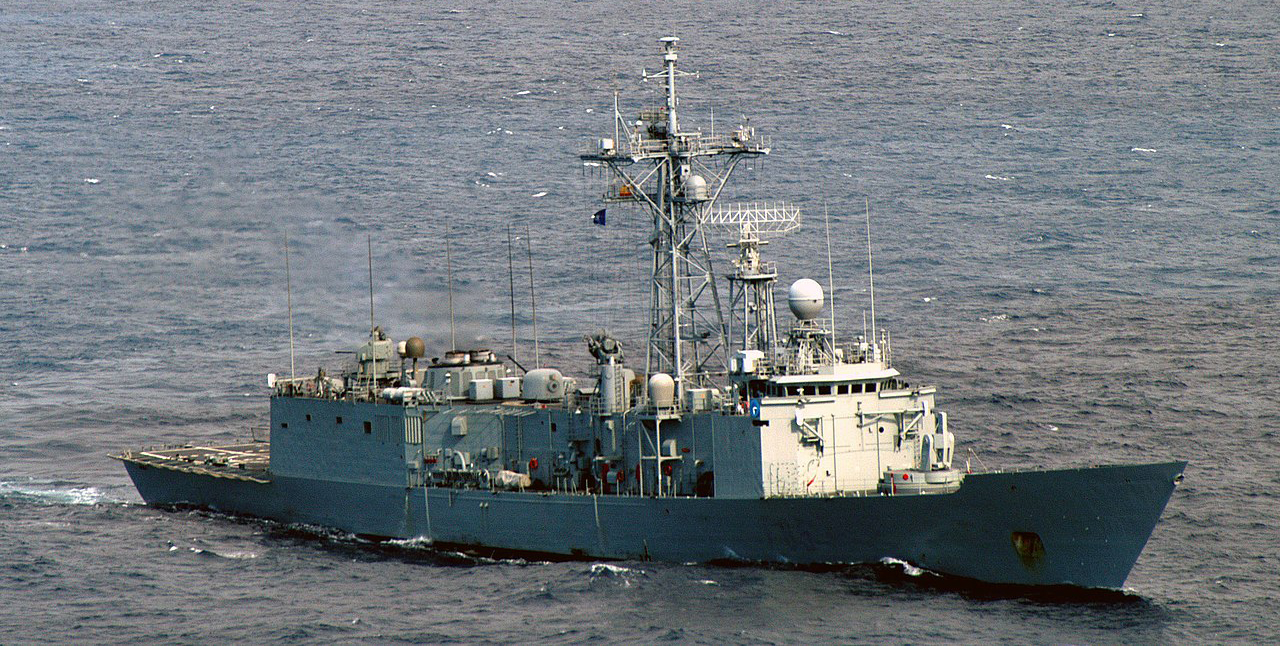
As the following picture shows, when the Spanish Navy finally did execute the HVBSS takedown of the So San, they did so during the day, after confirming with the captain of the So San that they would be coming aboard. But before they fast-roped in, Spanish snipers shot off some of the guide wires. As you can see, the forward cargo post has no aft tending guide wire stays.

A detachment of Spanish Sailors and Marines boarded the vessel without incident and began the search. In the cargo hold, they discovered, as expected, a shipment of 15 Scud missiles, concealed under bags of cement.
What was not immediately clear was the destination of the missiles. Despite rampant speculation that other more nefarious cargo might be onboard, repeated searches of the So San by a U.S. technical team revealed nothing of significance other than the Scud missiles.

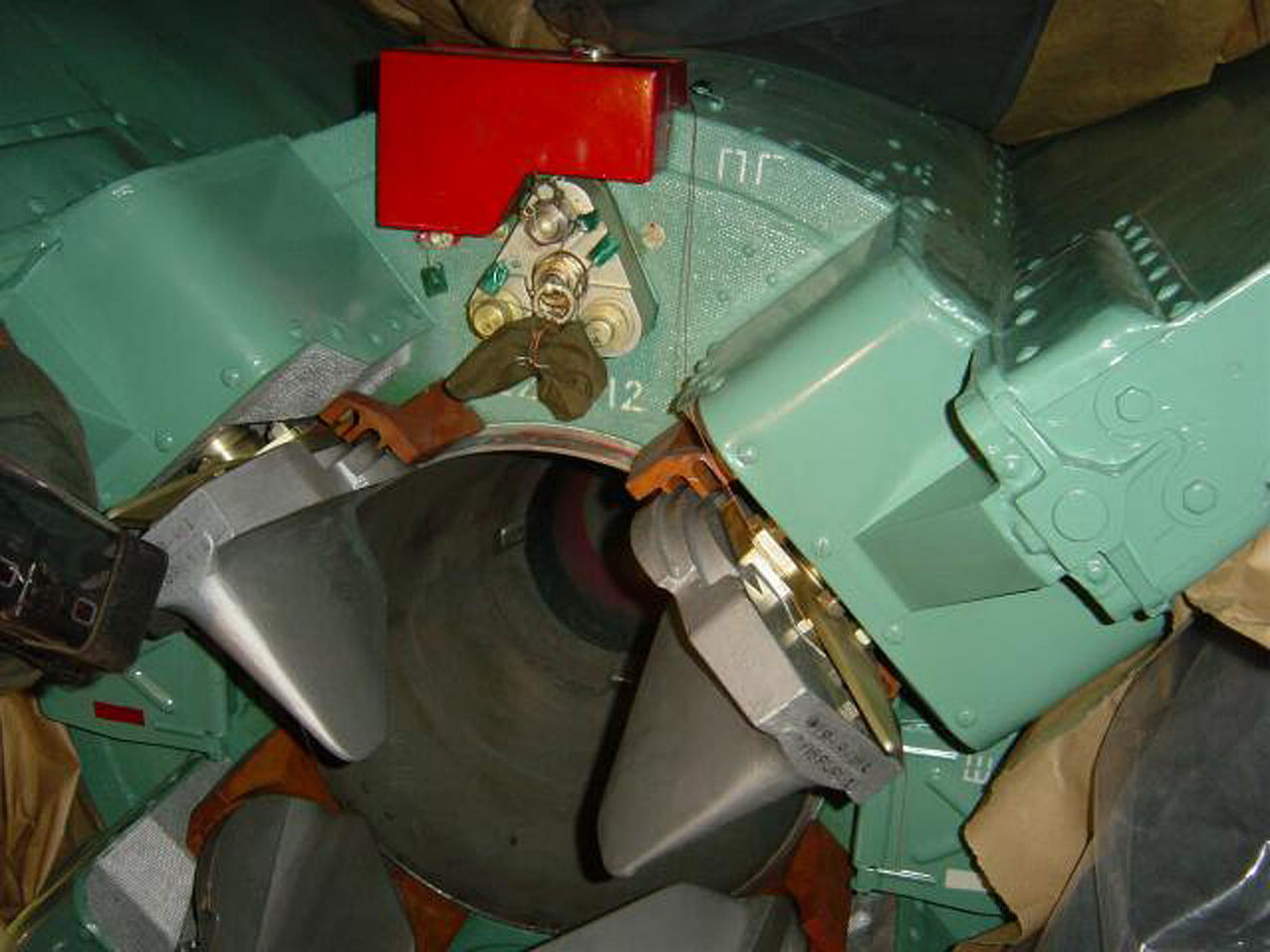
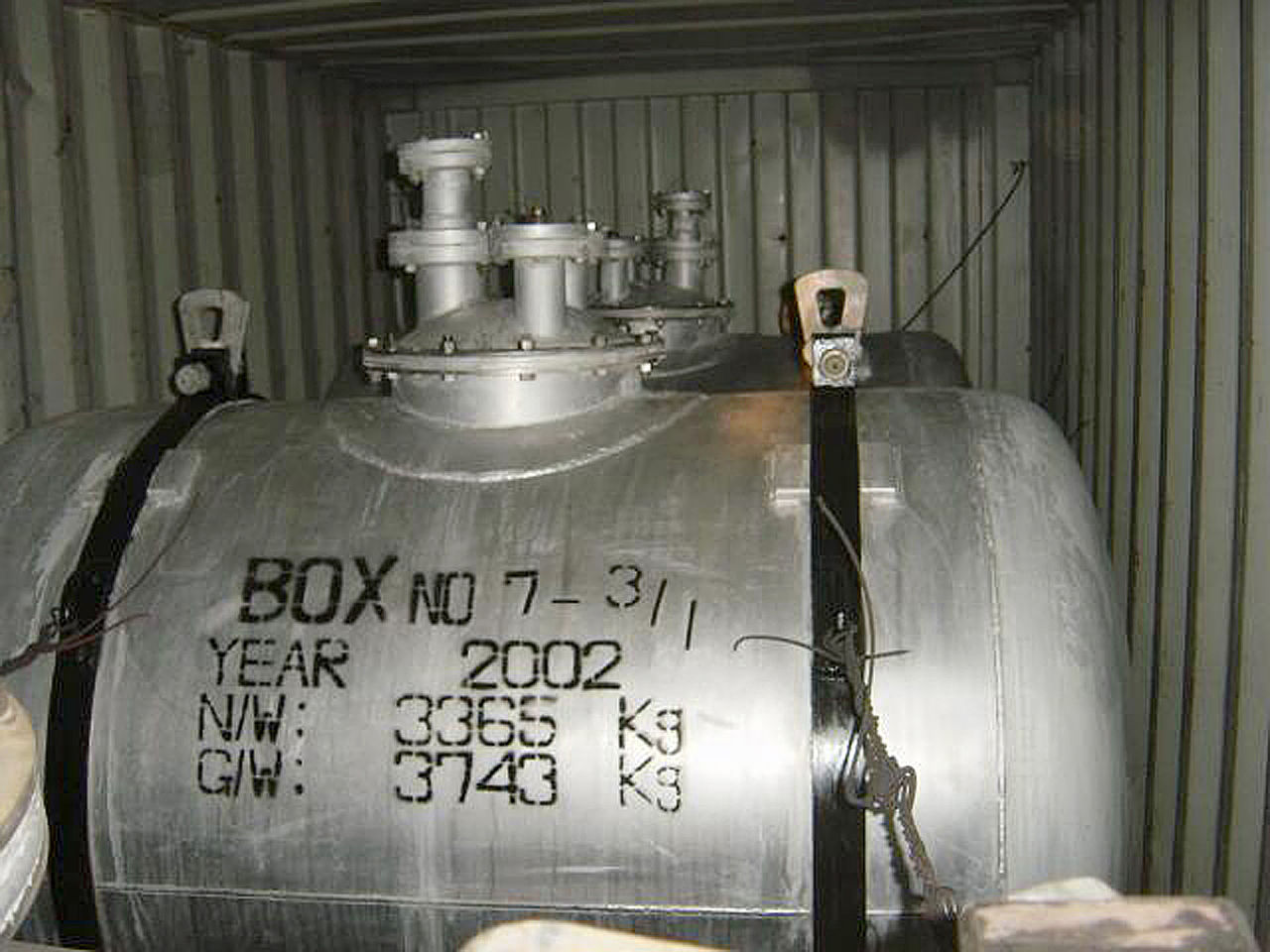


Iran? Sudan? Iraq? Al Qaeda? No…Yemen
At first, the captain of the So San would not reveal his intended destination. Speculation was rampant that the intended recipient of the Scuds was either a state sponsor of terror or a foreign terrorist organization (FTO). Eventually, the Yemeni government filed a complaint with the U.S. Department of State as the shipment of Scuds was in fact destined for Yemen, a country which at that time was ostensibly allied with the U.S. coalition in the ongoing anti-terrorism operations that were then known as the Global War on Terror (GWOT).
So, after a lot of high visibility drama that made the front page of newspapers around the world, we let the So San go on its way to Yemen where it delivered its cargo of cement and Scuds.
Was This A Spanish Navy or A U.S. Navy Mission? Yes.
While the Spanish Navy ultimately executed the Visit, Board, Search, and Seizure (VBSS) of the So San, this was, from inception to completion, a U.S. Navy mission. At the point of seizure, U.S. leadership made a decision to let our Spanish ally take the lead. That was a frustrating decision for many of us in the Navy that had spent over a month tracking the So San, but it was also the right decision.
Although Spain has a limited military capability, in the immediate aftermath of 9/11, it agreed to work closely with the U.S. government on the GWOT. As best I can tell, the decision to allow the Spanish Navy the prize of actually taking down the So San was intended to thank them for the cooperation and to solidify their status as a close U.S. ally in the GWOT. It was also a chance for the Spanish Navy to show that it could conduct important, high visibility operations at a distance from Spain.

From Major Win To Faux Pas?
Initially, the capture of the So San and discovery of Scud missiles looked like a major win for the Maritime Interdiction Operations (MIO) component of the GWOT.
The vast majority of the technology transfer between the ballistic missile and nuclear program of North Korea and Iran takes place on ships, as does the transfer of weapons from Iran to Sudan. Also, the majority of Iran’s transfer of rockets to Hezbollah and Hamas takes place by ships. If you want to stop the State Sponsors of Terror from helping each other and helping their allied or cooperative FTOs, you need to have an effective MIO program.
The public doesn’t know much about the MIO program, but in the aftermath of 9/11, the Navy and its allies were conducting or preparing to conduct MIO in dozens of locations around the world. It’s the epitome of a low profile, high impact mission.
So, successfully detecting, tracking, intercepting, and boarding the So San was a major, high visibility win for the Navy MIO program—right up until the point we figured out the Scuds belonged to an ostensible ally.

A Small Win Is Still A Win
In retrospect, the mission was executed correctly. There was no way to know where the Scud missiles were going and boarding the So San was the only reasonable course of action to take. The fact that a U.S. ally was buying Scud missiles from North Korea was portrayed by the media as an embarrassment, but most of us involved in the mission didn’t see it that way.
Everything about the So San mission was done correctly. The fact that Yemen was buying Scuds from North Korea painted the country in a far worse light than the U.S. decision to interdict the shipment and ascertain its destination.
Bottom line, the Scuds weren’t destined for a state sponsor of Terror or FTO. Nevertheless, the U.S. Navy validated its capability to detect, track, and seize illicit cargo on the high seas.
We sailed away disappointed that it wasn’t a bigger win, but a small win is still a win.

Contact the editor: Tyler@thedrive.com
